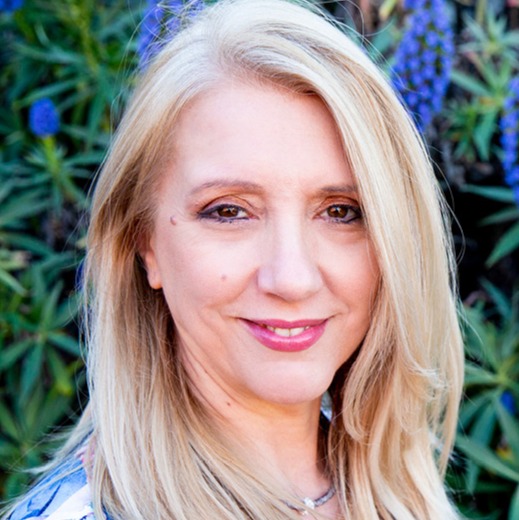
Showing compassion and kindness to others may have an additional side effect--psychological benefits for the giver. Most people brighten up with a kind word or a cheery smile, and neuroscience is now focusing on the benefits to people who show kindness and generosity. Leadership methods that incorporate this science can help produce happier, more authentic leaders.
Have you ever gone to your favorite coffee shop and found that someone “paid it forward”, meaning that your order was paid for? If you have experienced this gift, you probably felt a little flabbergasted, surprised, and your day likely seemed brighter. If you haven’t experienced it, maybe you can start a trend!
These “pay it forward” chains have been around for a while. A notable chain at a Starbucks in the United States went uninterrupted for eleven hours, extending to 378 customers.1 In South China, Starbucks stores had over 19,170 people pay forward orders to the next customer to continue what many dubbed “the chain of kindness”.2
Scientists have long understood that being generous boosts well-being, but now scientists hope to determine how generosity affects the brain. In a recent study, researchers tested different types of generosity, so test subjects were “playing” to benefit someone they knew in need, a charity, or themselves.
A surprising result was found. Targeted generosity (giving when you know the person needs it) decreased activity in the amygdala. The amygdala is part of the limbic system that processes emotions and controls our fight-or-flight response. Individuals with elevated activity in this part of the brain may experience anxiety, phobias, and PTSD, so decreased levels could help alleviate associated symptoms.3
Every sunrise is an invitation for us to arise and brighten someone’s day.
Richelle E. Goodrich
Your limbic brain isn’t concerned about collaborating with others--it wants YOU to survive. While self-preservation can be good (especially when our ancestors had to avoid carnivores to survive), we are stronger as a whole than as an individual. While many of us can be generous when we have an audience, can you honestly say you give when no one might ever know? Leaders who want to not only survive, but thrive, should work towards a more collaborative society, where thoughts and ideas are valued and considered. The world needs people who make a difference, big or small, in the lives of those around them.4
Small children are usually expected to share (even if they don’t want to!). But, somehow, when we grow up, we tend to hold tightly to our “stuff” and we can be reluctant to give it up--whether it’s a material possession, or money, or time. To extend your generous spirit at work and in your personal life, consider three tips:
Generosity is needed to inspire people to work with us when they don’t necessarily have to. Showing generosity to others, and “paying it forward” can create a happier, healthier version of yourself.
Citation:
1. Mazza E. Starbucks ‘Pay It Forward’ Streak Lasts 11 Hours In Florida. Huffington Post. 2014. Available at: https://www.huffingtonpost.com/2014/08/21/starbucks-pay-it-forward-streak_n_5697113.html http://doi.org/10.3389/fpsyg.2017.02045 > http://doi.org/10.3389/fpsyg.2017.02045 . Biolcati, R.; Mancini, G.; Pupi, V.; Mugheddu, V. Facebook Addiction: Onset Predictors.J. Clin. Med. 2018, 7, 118.
2. Starbucks Newsroom. More than 19,000 Customers ‘Pay it Forward’ in Starbucks South China Stores. 2014. Available at: https://news.starbucks.com/news/more-than-19000-customers-pay-it-forward-in-starbucks-south-china-stores
3. Inagaki TK, Ross LP. Neural Correlates of Giving Social Support: Differences between Giving Targeted versus Untargeted Support. Psychosomatic Medicine. 2018;Published ahead of print. Available at: https://journals.lww.com/psychosomaticmedicine/Abstract/publishahead/Neural_Correlates_of_Giving_Social_Support__.98689.aspx?PRID=PM_PR_083018
4. Damiano S, Cubeiro JC, de Haas T. Leadership is Upside Down: The i4 Neuroleader Revolution. About my Brain Institute. 2014.
These Stories on Generosity

Founder & CEO
About my Brain Institute
Scientist, educator, author, speaker, coach, award-winning leadership specialist, filmmaker and creator of the i4 Neuroleader Model & Methodology.
Silvia's scientific background and curiosity about the human brain led her to a decade long journey of research into optimal brain functioning and the application of neuroscience in leadership and daily life. Her past and current roles have uniquely prepared her for the current undertaking, that of leadership activist & change agent.
Silvia Damiano founded The About my Brain Institute in 2009, with the purpose of democratising leadership & neuroscience. She has a passionately held belief, that leaders in our 21st century global economy and their organisations must radically change long-held ideas of what constitutes effective leadership
In her ground-breaking books ‘Leadership is Upside Down’, ‘Brain-Friendly Leadership’ and the 2018 documentary ‘Make Me A Leader’, Silvia provides both compelling evidence and explores the importance of leadership in our personal and professional lives and what it takes to develop the human behind the leader.
Silvia has worked in different countries, across many industries, helping teams and organisations improve business performance. Silvia’s clients have described her as a passionate, dynamic, a highly experienced speaker and master facilitator on the topics of Emotional Intelligence, Cultural Change, Neuroleadership & Engagement.
Silvia is passionate about leaving a legacy of well-rounded leaders who can act and decide in a way that better serves humanity. Her clients include Microsoft, Australian Stock Exchange, NSW Government, VISA, Fuji Xerox and Manpower amongst many other global companies.
Monday to Friday
9:00am - 5:00pm (AEST)
Sydney, Australia
We reply within 48 hours!
General Business Enquiries:
hello@aboutmybrain.com
Technical Support:
support@aboutmybrain.com
No Comments Yet
Let us know what you think